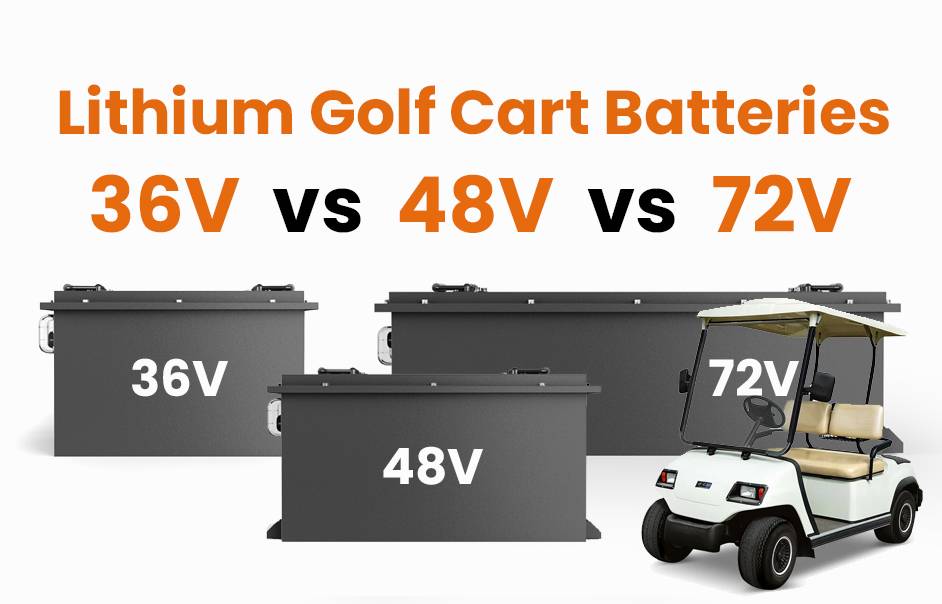
Blog
Why Are LiFePO4 Batteries Dominating the Golf Cart and Renewable Energy Markets?

LiFePO4 (lithium iron phosphate) batteries offer longer lifespan, faster charging, and lighter weight compared to lead-acid alternatives. Their stable chemistry ensures safety in extreme temperatures, making them perfect for golf carts that require consistent performance across seasons. With 2,000–5,000 cycles, they reduce replacement costs by 50–70% over traditional options.
How Has the Golf Industry Driven Demand for LiFePO4 Batteries?
Golf courses prioritize sustainability and operational efficiency, fueling a 35% annual growth in LiFePO4 adoption. These batteries enable longer runtime per charge, reducing downtime during tournaments. Municipal golf fleets and resorts also favor their low maintenance, aligning with eco-friendly initiatives.
Which Industries Beyond Golf Are Adopting LiFePO4 Technology?
Marine, RV, solar storage, and electric vehicle (EV) sectors increasingly use LiFePO4 batteries. Their high energy density and thermal stability suit off-grid applications, while EVs benefit from rapid charging. Telecom towers and emergency backup systems also rely on them for reliability in harsh conditions.
Why Do LiFePO4 Batteries Outperform Lead-Acid and Other Lithium Types?
Unlike lead-acid, LiFePO4 batteries maintain 80% capacity after 2,000 cycles and charge 4x faster. They lack toxic lead/cadmium and resist thermal runaway, unlike NMC lithium batteries. Voltage stability during discharge ensures consistent power delivery, critical for motors and inverters.
What Environmental Advantages Do LiFePO4 Batteries Provide?
LiFePO4 batteries are 99% recyclable, with no hazardous waste. Their 10–15-year lifespan reduces landfill contributions, and energy-efficient production cuts carbon footprints by 40% versus lead-acid. Solar compatibility further supports renewable energy integration.
The environmental benefits of LiFePO4 batteries extend beyond their recyclability. Unlike traditional lead-acid batteries, which contain toxic materials like lead and sulfuric acid, LiFePO4 chemistry uses non-toxic iron phosphate, posing minimal risk during disposal. Major recycling facilities can recover 95% of lithium content through hydrometallurgical processes, compared to just 60% lead recovery in acid batteries. A 2023 study by the Green Energy Council showed that switching a 50-vehicle golf fleet to LiFePO4 prevents 12 tons of lead waste annually. Furthermore, their compatibility with solar energy systems creates closed-loop sustainability – solar panels charge batteries during daylight, while nighttime energy draw reduces reliance on fossil-fuel grids. This synergy is particularly valuable for off-grid resorts and remote golf courses aiming for carbon neutrality.
Know more:
Why Is LiFePO4 the Future of Golf Cart Batteries?
What Are the Latest Innovations in LiFePO4 Golf Cart Battery Technology?
Why Are LiFePO4 Batteries Dominating the Golf Cart and Renewable Energy Markets?
What Are the New Regulatory Changes for Golf Cart Batteries?
Why Are Golf Courses Switching to LiFePO4 Batteries?
What Are the Top Golf Cart Battery Tech Events in 2025?
How Do Cost Savings of LiFePO4 Batteries Compare Over Time?
While upfront costs are 2–3x higher than lead-acid, LiFePO4 batteries save 60% over 10 years due to minimal maintenance and replacements. Golf courses report ROI within 18–24 months via reduced energy and labor costs.
The financial case for LiFePO4 becomes compelling when analyzing total cost of ownership. A typical 48V golf cart battery system shows striking differences:
| Factor | LiFePO4 | Lead-Acid |
|---|---|---|
| Initial Cost | $1,200 | $600 |
| Lifespan | 10 years | 3 years |
| Replacements Needed | 0 | 3 |
| Total Energy Cost | $480 | $1,440 |
| Total 10-Year Cost | $1,680 | $3,240 |
This table reveals 48% savings despite higher initial investment. Municipalities like Phoenix’s GreenLinks program achieved 63% cost reduction by combining LiFePO4 with smart charging stations that optimize off-peak electricity rates. Additionally, reduced downtime from frequent lead-acid replacements improves operational efficiency – a hidden saving often overlooked in traditional analyses.
What Innovations Are Shaping the Future of LiFePO4 Batteries?
Solid-state LiFePO4 prototypes promise 30% higher energy density by 2026. Smart BMS integration enables real-time health monitoring via IoT, while modular designs allow scalable storage for mega-solar farms.
How to Maintain LiFePO4 Batteries for Maximum Lifespan?
Avoid deep discharges below 20%, store at 50% charge in cool environments, and balance cells annually. Use temperature-controlled chargers to prevent overheating. Most manufacturers offer Bluetooth apps for voltage tracking.
Expert Views
“LiFePO4 isn’t just a trend—it’s rewriting energy storage economics,” says Dr. Elena Torres, CTO of VoltCore Solutions. “Golf carts were the gateway, but the real disruption is in grid-scale storage. By 2030, we expect 70% of new solar installations to pair with LiFePO4 systems due to falling costs and regulatory shifts.”
Conclusion
LiFePO4 batteries dominate golf and renewable markets through unmatched durability, safety, and eco-efficiency. As technology advances and industries prioritize sustainability, their adoption will accelerate, reshaping energy storage paradigms globally.
FAQ
- Can LiFePO4 batteries handle cold weather?
- Yes, they operate from -4°F to 140°F, unlike lead-acid, which loses 50% capacity below freezing.
- Are LiFePO4 batteries legal for golf tournaments?
- USGA and R&A approved them in 2021, as they don’t enhance speed unfairly.
- How long do LiFePO4 batteries take to charge?
- 2–4 hours for 0–100%, versus 8–10 hours for lead-acid.





